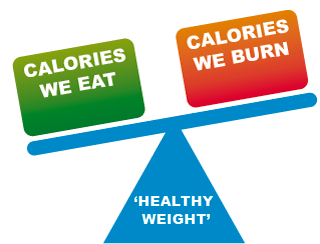5 Lifestyles and choice

Obesity is frequently seen as a consequence of the poor lifestyle choices that an individual makes. Earlier in this free course, obesity was defined (as it often is in quantitative research) in terms of BMI: i.e. to be classified as obese a person must weigh over 30 kg/m2. However, the Oxford English Dictionary defines it in less definitive or measurable terms:
The condition of being extremely fat or overweight; stoutness, corpulence.
The underlying explanatory argument that has been put forth about adult obesity focuses on individual responsibility. This is where a person should address the imbalance between the ‘energy going in’ over ‘energy that is expended’ in their body, and this is the position which is highlighted in policy documents, for example, by the Department of Health:
Overweight and obesity are a direct consequence of eating and drinking more calories and using up too few. We need to be honest with ourselves and recognise that we need to make some changes to control our weight.
Many people struggle with their weight, and with creating (as well as maintaining) a healthy lifestyle. In the next activity you will see a clip of the television chef Hugh Fearnley-Whittingstall (from the BBC/Open University co-production Britain’s Fat Fight). In this short video Hugh is assessed in terms of his weight by a general practitioner (GP) who he talks to about aspects of his lifestyle in relation to his weight that are helpful and not so helpful.
Activity 4 Lifestyle factors and obesity
Part A
Play Video 2, in which Hugh talks to a GP about his weight. Then answer the questions below.

Transcript: Video 2 Hugh visits his GP
[MUSIC PLAYING]
[MUSIC PLAYING]
a.
underweight: <18.5 kg/m2
b.
healthy weight range: 18.5–25 kg/m2
c.
overweight: 25–30 kg/m2
d.
obese: >30 kg/m2
e.
morbidly obese or severely obese: >40kg/m2
The correct answer is c.
Comment
Given Hugh’s BMI result he would be categorised as being overweight. This is because Hugh is 81 kg (12 st or 10.6 lb – we are not told what height he is) and we are informed he has a BMI of 26.2 kg/m2.
2. Following the GP’s assessment of Hugh, which result does he describe as ‘more worrying’ than Hugh’s BMI?
Comment
The GP was more concerned about Hugh’s abdominal circumference than his BMI. This is an alternative metric for determining whether someone’s size is a concern in terms of their overall health. As Hugh’s abdominal circumference is over 90 cm he is at greater risk of health issues such as diabetes.
3. What behaviours or lifestyle factors does Hugh describe as being problematic in relation to him achieving a healthy weight?
Comment
Hugh states that he has a ‘sweet tooth’ and that he drinks alcohol (specifically cider and wine) ‘almost every day’. He also drinks ‘more than a glass’ at a time.
Although lifestyles are seen as an individual’s responsibility, the social context in which people lead their lives exerts a powerful influence on people and their ability to ‘choose a healthy lifestyle’. Furthermore, the idea of choice and responsibility is not always straightforward, as you will see in the next section.
